
Chinese food versus Japanese food is the rivalry that defines Asian cuisine because both are wildly popular worldwide. While Japan and China are right next to each other, their food can’t be any more different with only a few similarities.
China has a great influence on its nearby countries, making it difficult to differentiate between Chinese and Vietnamese dishes, sometimes. In contrast, Japan is a small island nation that lacks many gifts from nature, but the country makes up for the setback with its ingenuity.
In this beautiful discovery of Asian food, I want to help you delve deeper into Chinese and Japanese cuisine. All the information here will benefit your next trip to these Asian countries. Without further delay, it’s time to jump into the article.
All You Need To Know About Chinese Food
Thanks to the massive geography of China, the country possesses a wide variety of interesting ingredients. That advantage alone can push Chinese cuisine to the top of the world regarding elements and cooking styles.
History Of Chinese Food
China stands among one of the oldest continuing civilizations in the world. Due to the country’s longevity, the culinary scene of China is also quite as vibrant as its overall culture, dating as far back as around 2,200 – 1,600 B.C in an era called “Qijia culture.” (1)
Generally speaking, most historians and gastronomists would divide the culinary history of China cuisine into two parts: The period before and the period after the Tang dynasty (7th – 10th century A.D).
Before the Tang dynasty, Chinese people knew how to harvest grains such as soybeans, wheat, and foxtail millet as reliable food sources. Not just that, but the introduction of animal domestication provided a sustainable source of nutrients to the old Chinese civilization.
During the golden age of the Tang era, China was still enjoying the same ingredients and the addition of new ones like squid, jellyfish, and crabs. The trade route between China and India also introduced spices, specifically sugar, to the diet back then.
After the Tang dynasty, the country continued integrating cuisines from the Jurchen and Mongol people. During the Ming dynasty (14th – 17th century A.D), delicacies from the new world like sweet potatoes, maize, and peanuts began to arrive in China.
Regional Cuisines In China
The diversity of Chinese cuisine comes from the fact that there are eight smaller regional cooking styles. These regional cuisines take inspiration from geography as well as the cultures of the surrounding regions.
1. Cantonese Cuisine

The cuisine is representative of southern Chinese cooking, specifically in the Guangzhou region that encompasses Guangdong, Hong Kong, and Macau. The region is home to ethnic groups like Cantonese, Hokkien, and Teochew.
Southern Chinese cooking puts a lot of emphasis on harmony and balances the flavors most efficiently. Cantonese cuisine relies heavily on sauces like black bean sauce, oyster sauce, and hoisin sauce, which are synonymous with most Cantonese food.
Although the cuisine prefers fresh ingredients, there are many preserved and dried options in this region, like century egg (a fermented type of egg that turns black), dried scallops, and fermented tofu.
Cantonese cuisine is one of the most popular Chinese styles across the world.
2. Sichuan Cuisine
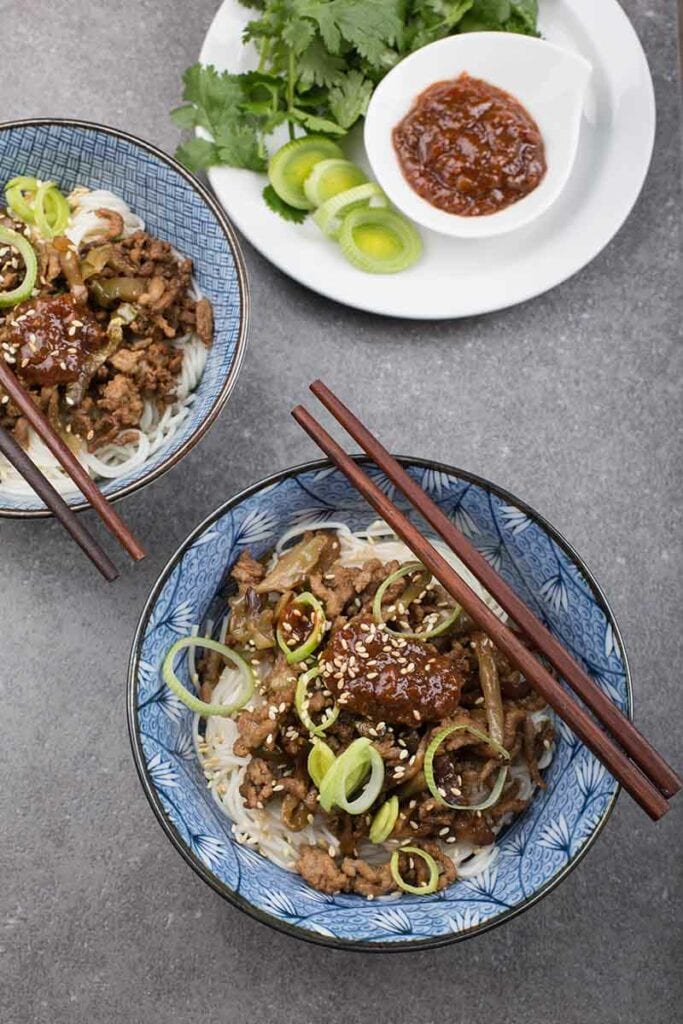
If Cantonese cuisine is too mild for your taste, I suggest trying the explosive Sichuan cuisine instead. This Chinese culinary style is famous for its use of Sichuan peppercorn, an ingredient that is both spicy and numbing.
Many Chinese people hold high regard for Sichuan cuisine thanks to the region’s richness in natural resources. The essential elements of this cuisine style include spiciness, sourness, and sweetness.
Unlike most regional Chinese cuisines, the Sichuan style uses a lot of beef, thanks to the abundance of oxen in the area. Not just that, but rabbit meat is a delicacy you can find in many Sichuan restaurants.
The core of Sichuan cuisine is all about using the best spices.
3. Anhui Cuisine

Anhui cuisine is synonymous with the region of Anhui cuisine in the eastern side of China. This cuisine consists of three sub-categories: the Yangtze river style, the Huai river style, and the southern Anhui style.
The thing about Anhui cuisine is that the region relies heavily on stewing and braising as the primary cooking technique, thus giving the meals a more fulfilling experience. Besides that, tofu is one of the most prominent ingredients for Anhui cooking.
If you’re familiar with a smelly Chinese specialty called “stinky tofu,” you would be glad to know that the dish came from the Anhui region. Aside from tofu, other notable food from Anhui cuisine includes egg dumplings, chop suey, and imperial goose.
4. Shandong Cuisine

The Shandong region is an integral part of the history of Chinese cuisine. That’s because many Chinese cooking styles take a lot of inspiration from Shandong cuisine. So, what exactly did this province become so crucial in the grand scheme?
The origin of Shandong cuisine went as far back as the Spring And Autumn Period (8th – 3rd century B.C), particularly in the states of Qi and Lu. (2) The cooking style has two different schools: Jiaodong (focusing on seafood) and Jinan (soup being the core).
The Shandong cuisine is a versatile cooking style, using many other methods, including quick frying, stewing, and roasting. Shandong food is relatively light and fresh in taste.
Besides seafood, the cuisine utilizes other ingredients like maize (similar to corn but not sweet), peanuts, and grains (millet, wheat, and oats).
This video offers a thorough look at the food of the Shandong region.
5. Fujian Cuisine

In this entry, I want to introduce you to the Fujian cuisine of Fujian province in southeast China. Fujian is the birthplace of the Hokkien people, who also migrated to nearby Taiwan and the surrounding region, influencing their cuisine to a certain extent.
Fujian cuisine takes advantage of nature within Fujian province. Due to the area facing the East China Sea, seafood is abundant. Not just that, the geographical advantage also provides the province with many incredible plant species.
Unlike the rest of China, Fujian’s taste is similar to that of the Southeast Asian region since many prefer using a fermented seafood sauce called “shrimp oil” (or Xia You). Fujian is also where you can find the “drunken food” style, marinating ingredients in a copious amount of wine.
6. Jiangsu Cai Cuisine
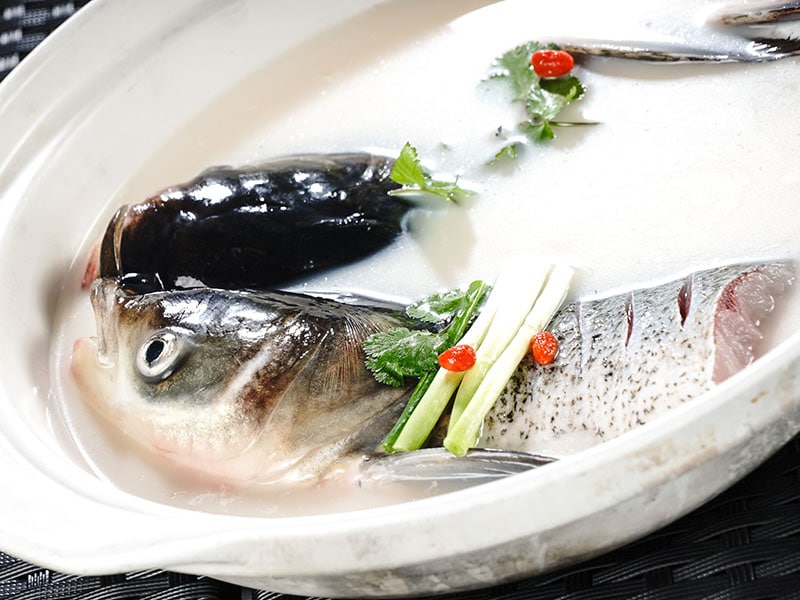
Jiangsu cuisine is a cooking style that originates from the Jiangsu province, which lies on the eastern side of China, facing the East China Sea. The cuisine often combines soy sauce and sugar to create a harmonious blend of sweet and savory.
Within Jiangsu cuisine, there are many sub-categories, including Nanjing style (emphasizing aesthetics) and Suzhou style (focusing on more robust ingredients). However, the true king of Jiangsu cuisine is the Huaiyang style.
While some may consider Huaiyang food part of Jiangsu’s cooking, the style is somewhat independent with its sweet-forward flavor. The region uses a lot of Chinkiang black vinegar in its cooking, a condiment from Jiangsu province.
Some of the most prominent Su-styled food is Chinewidearp soup (Ji Yu Tang), braised spare ribs (Hong Shao Pai Gu), and Lion’s Head meatballs (Shi Zi Tou).
7. Hunan Cuisine
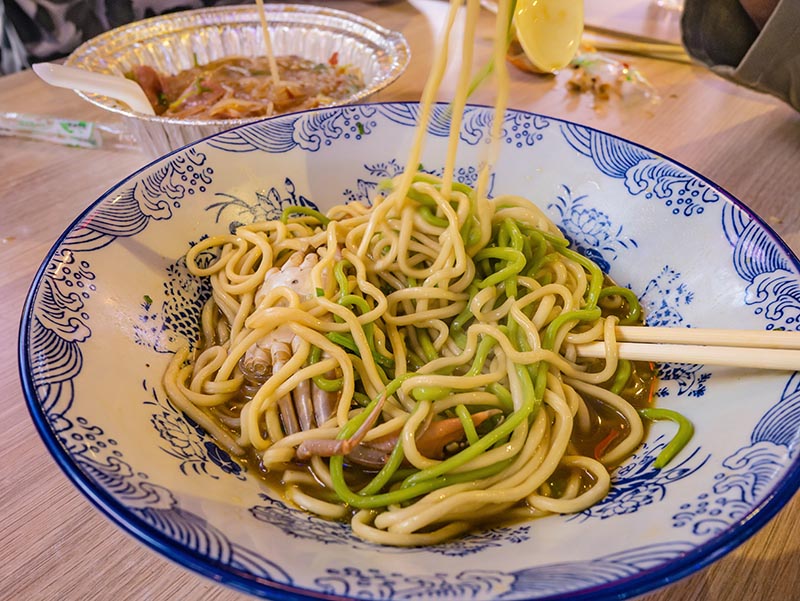
Aside from Sichuan cuisine, Hunan cuisine (also known as Xiang) is also notable for its spiciness level. The history of Hunan cuisine dates as early as the 17th century, during the reign of the Qing dynasty.
Compared to Sichuan cuisine, where peppercorn causes a numbing effect, the heat level of Hunan food is more of a “dry burning.” The stinging sensation is much more unbearable because of the excessive use of chili pepper.
Another remarkable aspect of Hunan food is that you will see different courses being served during a particular season. For example, you will see a cold dish first to cool your body down during the summer. On the other hand, winter is always the perfect time to eat hot pot.
This will show you what street food is like in Changsha, the capital of Hunan province.
8. Zhejiang Cuisine
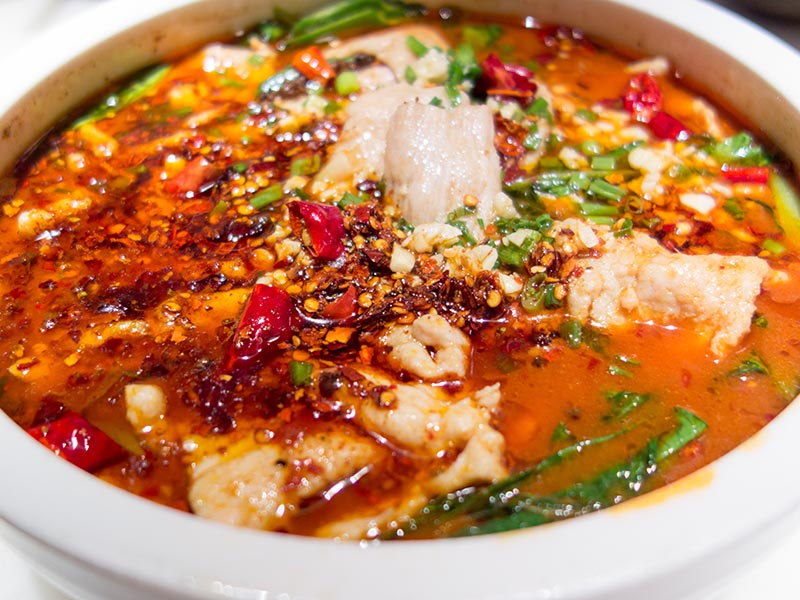
This particular cuisine comes from the Zhejiang province on the eastern side of China, bordering Jiangsu province and Shanghai city. In essence, Zhejiang-styled food is not greasy or fatty since you can feel a sense of freshness from most of the ingredients.
Like the previous entries, Zhejiang cuisine also consists of smaller sub-sections, like Hangzhou style (using bamboo shoots as one of the staple ingredients), Shaoxing style (emphasizing poultry and freshwater fish), and Ningbo style (focusing on seafood and the fresh quality of it).
If you ever visit the various regions of Zhejiang province, try many of its incredible delicacies like Beggar’s Chicken, a stuffed chicken dish, and Dongpo Rou, a fried piece of pork belly that’s braised in soy sauce.
Quick Rundown Of Culinary Japan
Similar to China, Japanese society has existed for thousands of years, from the reign of Emperor Jimmu (8th – 6th century B.C) to the current Emperor Naruhito. The long history of Japan has led to the creation of different varieties of food.
After the period between 14,000 and 300 B.C, also known as Jomon, ancient Japanese slowly switched to an agricultural lifestyle. The period introduced rice to the Japanese diet, and the staple has stayed there for centuries.
During the Kofun era (4th – 6th century A.D), Chinese culture began to flood into Japan, creating a sort of mix between pre-existing cuisine and new Chinese delicacies. The new additions include fruits, chopsticks, and cooking techniques.
However, as time passed, Japan began to reduce the influence of Chinese culture in its cuisine. During the age of the Shogun, starting with the Kamakura shogunate (12th – 14 century A.D), the meals of the Japanese court were simple, with dried abalone, pickled plum, and rice.
1. Nagoya Style

For this entry, I want to introduce you to the ever-delicious Nagoya cuisine, which comes from the Nagoya city of the Chubu region. One of the most memorable aspects of the area is the implementation of Italian, Taiwanese, and Indian styles in its cooking. (3)
Aside from taking inspiration from foreign cuisines, the Nagoya style still utilizes some local delicacies, including Mame Miso, Tamari (a version of soy sauce from the region), and Cochin (a domestic breed of chicken).
Due to the unique nature of Nagoya cooking, you can find many delectable dishes in the city like Ogura toast (a slice of toast topped with bean jam and butter) and Tebasaki (a chicken wing specialty covered in a sweet sauce and sesame seeds).
Whenever you visit the region of Nagoya, you have to try its street food.
2. Hokkaido Style
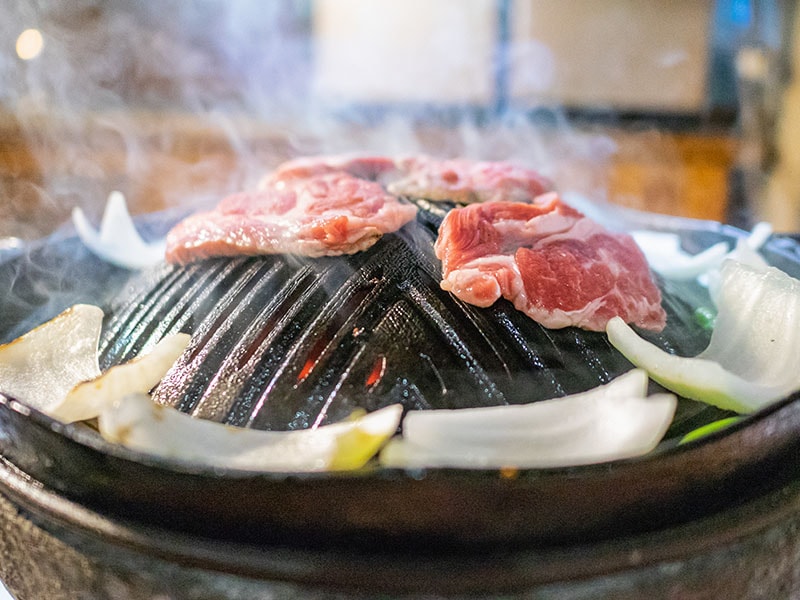
Another style of cooking from Japan with you all is the Hokkaido cuisine. The style is synonymous with the northernmost part of Japan and relies heavily on the abundance of seafood in the region.
The influences of Hokkaido come from many factors. First and foremost, the area is home to a group of indigenous people called Ainu. The Ainu people take advantage of the land to harvest ingredients like Siberian onions, butterbur, and salmon.
Not just the Ainu people but Mongolia also has a big part in forming Hokkaido cuisine. One of the most popular local specialties in the province is the Genghis Khan BBQ. This dish consists of lamb, which is somewhat unusual in the overall Japanese cuisine.
Another unique aspect of Hokkaido cuisine is its drinking culture. This region is home to many famous Japanese beverages. Its capital is Sapporo, the name of a famous beer brand worldwide. The history of alcoholic drinks in the area is long, with the first 40 breweries established in 1876.
3. Tohoku Style
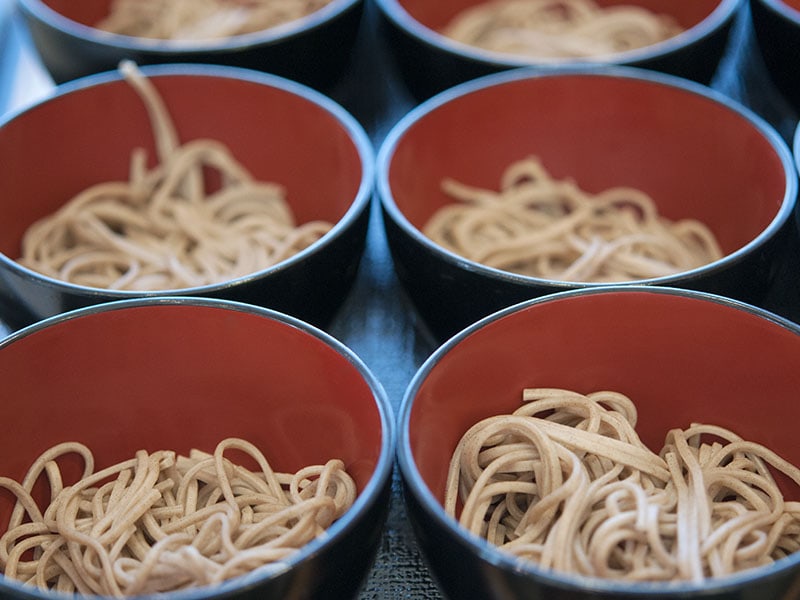
The Tohoku region consists of six different regions in the upper half of the Honshu island of Japan. The six prefectures that form Tohoku are Akita, Aomori, Fukushima, Iwate, Miyagi, and Yamagata.
Each of the prefectures has its own distinct cooking style. However, one thing ties the region together: liquid-based dishes. Most people in Tohoku love to eat hotpots, stews, and soups.
When it comes to the specific regional dishes of Tohoku, there are so many examples to choose from since each prefecture excels in its specialties.
For the Akita prefecture, you have the popular Kiritanpo Nabe, a type of Nabe (hotpot with meat, vegetables, and mushrooms) with grilled rice. Aside from that, you also have a special Sushi called Hatahata Zushi, which comes from salted sandfish.
As for the Fukushima prefecture, the place also puts its unique take on Tohoku cuisine by adding Kozuyu, a soup that uses dried scallops as the base.
4. Kansai Style

In contrast to the Tohoku region, the Kansai region is on the lower portion of Japan’s Honshu island. Overall, the region is made up of several prefectures, including Nara, Osaka, Hyogo, Shiga, and Wakayama.
The region has always been important to the cultural history of Japan, that’s why you can see that a lot of popular Japanese dishes started from here. The importance of Kansai to Japanese cuisine is high enough that many people dub it the “Japanese kitchen”.
In the Kansai region, you cannot miss out on seafood. The place is a heaven to seafood-lovers with delicacies like oysters, lobsters, and even the popular snow crabs.
Not just seafood, but beef is also one high-class specialty that the region excels at since it’s the home of Kobe beef. The beef is tender and juicy thanks to its marbling (the fat runs through the meat).
And, of course, if you’re a street food lover, then Okonomiyaki and Takoyaki are going to entice you. The Japanese street food staples originated from the Kansai region and have slowly taken over the world.
5. Okinawan Style
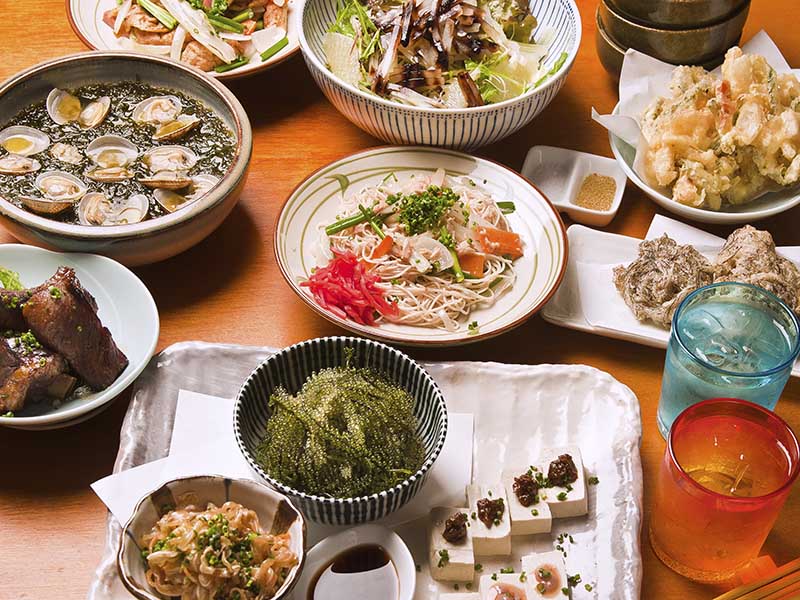
The Okinawan style comes from the tiny island of Okinawa, the southernmost prefecture of Japan. Due to the distance between mainland Japan and Okinawa, the culture and cuisine on the island have a slightly different feel.
Both regions have influenced Okinawan cooking as an island closer to China and Southeast Asia. For example, vegetables like bitter melon and luffa came from Southeast Asia to Okiwana through trading.
Cooks from the island also traveled to Fujian province to learn about Chinese food. And to further increase the diversity of Okinawan food, the occupation by US troops also opened up Okinawa to a whole new side of western delicacies like hamburgers and canned food.
An interesting tidbit about Okinawa cuisine is that seafood is not particularly popular there despite the island being surrounded by the ocean. The people prefer land-based ingredients like potatoes and rice. However, Okinawans still love using seaweed in their cooking.
In this presentation, you will go through a tour full of Okinawan culinary goodness.
Comparison Between Japanese Food And Chinese Food
Although China and Japan share many similarities in their cultures thanks to the geographical closeness, their cuisines slightly vary because of the climate, food source as well as diets of their citizens.
Similarities Between Chinese And Japanese Food
First, it’s time to discuss the similarities between Chinese and Japanese food. Both of these cuisines share a lot of ingredients as well as cooking methods. The influence of Chinese and Japanese cooking came from the same region.
1. Influences
Without a doubt, Japanese cuisine has a lot of elements taken from Chinese cuisine, including the use of similar ingredients like ramen and Yuzu (a type of citrus fruit originating in China) and cooking techniques like steaming and stir-frying.
Another factor that brings Chinese and Japanese food together is religion, notably Buddhism. Many Japanese dining etiquettes come from Chinese Buddhist traditions, like not putting everything in a rice bowl but separating the rice from the side dishes.
On the other hand, some regional Chinese cuisines also share the same characteristics as Japanese cuisines, like Zhejiang food which emphasizes fresh seafood. Tofu is another common ingredient that both countries share.
2. Ingredients

Due to the closeness of the two nations, China and Japan share a standard set of ingredients and staples in many of their cuisines. First, both Japan and China love to eat meat as it is one of the most common staples in Asian meals.
The three most common types of meat in the two countries are chicken, pork, and beef. There are a few popular examples of popular meat-based dishes like Karaage (fried chicken) and chicken Katsu (cutlet) in Japan, while China has Hong Shao Rou (braised pork belly)
Aside from land-based components, China and Japan also prefer seafood in their cooking. The shared nature of China and Japan gives rise to other regional ingredients like soy sauce, tofu, and tea. The trio of specialties is prevalent in Asian meals.
And for drinks, most East Asian countries, including Japan, China, and Korea, prefer to have rice wine instead of the more fruit-centric Western alcoholic beverages.
3. Rice And Wheat Noodles
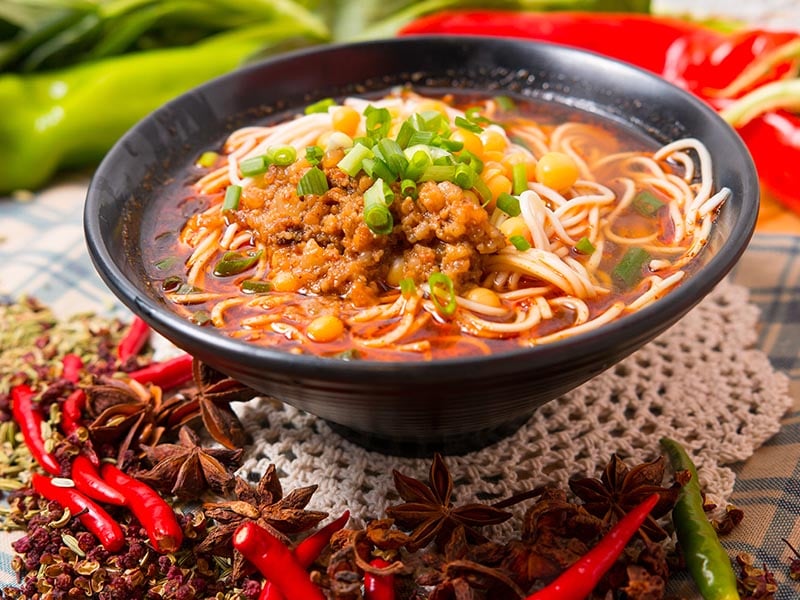
Regarding staples in Chinese and Japanese cooking, there are always two significant examples: Rice and noodles.
The introduction of rice took place during the early Chinese civilization, around the basin of the Yangtze River during the Neolithic era (10,000 – 4,500 B.C). For many southern Chinese provinces and Japan, rice is integral to everyday meals.
Many different versions of noodles in China have become part of the average East Asian diet. The creation of wheat noodles started very early during the Han dynasty (3rd century B.C – 3rd century A.D). Many currently popular Chinese staples are noodle dishes.
The arrival of noodles, especially ramen, was much later during the 9th century with the introduction of Udon noodles. Ramen is another famous Chinese specialty that made its way to Japan during the 19th century.
Ramen noodles are an important delicacy in both China and Japan.
4. Nutritional Values
There is no denying that Japanese and Chinese food is balanced regarding nutrients. The theme of both cuisines is harmony, and you can clearly see that through the choice of ingredients.
When you look at a typical Chinese or Japanese meal, you can see that it has meat (proteins), vegetables (fiber), and rice/noodles (carbs). The trio of components should always be available in a meal to maximize the nutrients.
However, remember that some Chinese and Japanese food can be greasy since they have their fair share of deep-fried food. But they’re only a small part of the larger cuisine, so you can stay healthy most of the time.
Differences That Divide Both East Asian Cuisines
Although the short geographical distance between both Asian countries helps with the sharing of cultures and cuisines, there are still differences between the food in China and Japan. These differences lie within cooking methods as well as the flavors.
1. Meal Preparation
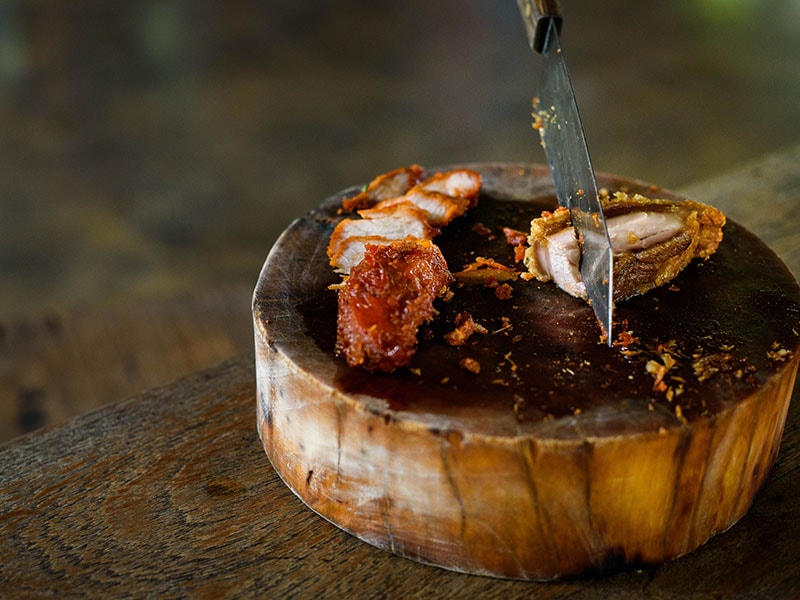
Although both cultures share the same belief in Confucianism and the importance of balance in every aspect of life, it is food where these two countries are different from each other.
The Preparation Of Chinese Cooking
When it comes to China, the main focus of cooking is to emphasize the bountifulness of the food. That’s why Chinese cooks often cut meat and vegetables into large cubes. This method ensures that each bite is as impactful as possible.
Another facet of Chinese cooking is that the Chinese love their food to be heavily seasoned. Aside from the usual set of seasonings like salt, sugar, and pepper, China is home to other herbs and spices like black vinegar, star anise, and Chinese cinnamon.
The Preparation Of Japanese Cooking
Moving on to Japanese, you would be surprised to know that it’s quite the opposite of Chinese cooking. Most, if not all, Japanese cooks tend to have the mentality of “letting the food do the talking”, which is why Japanese food has so few seasonings.
Japanese cuisine can be quite complicated to prepare since there are different knives and kitchen utensils. The biggest reason is that Japanese people prefer their food to be thin and fit in their mouths, which requires different knives for different ingredients.
You will understand how Chinese cooks prepare their meals through this little tutorial.
2. Regional Cuisines And Cooking Styles
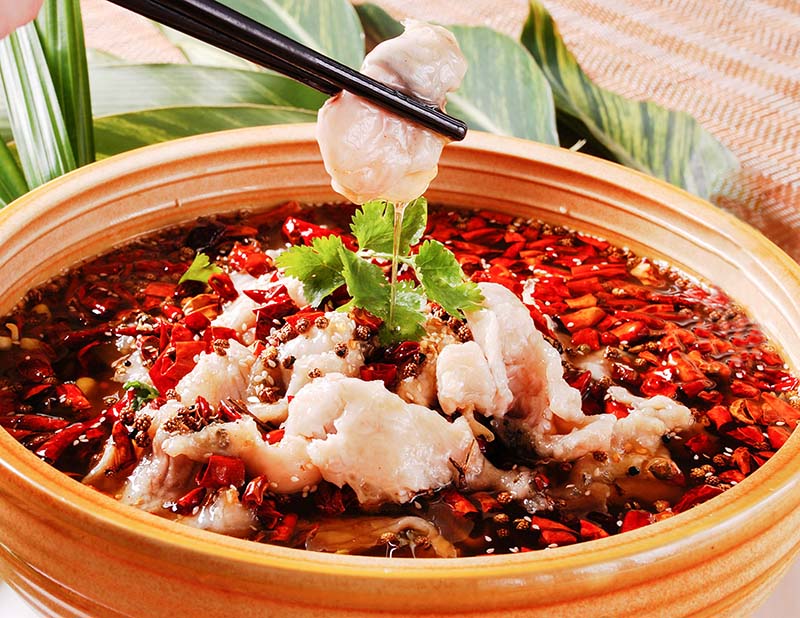
The next most significant difference comes from specifically regional ingredients and cooking styles. Due to the differences in natural resources and geography, the people of both countries have to utilize different things for their meals.
Thanks to the abundance of plants and animals in China, you can feel a sense of variety in the cuisine. Each Chinese province has unique delicacies, including spicy noodles from Sichuan and Hunan or fresh seafood from Fujian province.
Across the sea, Japan has minimal resources, so the people have to be somewhat creative. The regional cuisine of Japan relies on taking advantage of every piece of the land, including the sea, the mountains, and the numerous islands.
Aside from the Japanese cooking styles I mentioned above, Japan is also home to other styles like Hokkaido with its focus on soup and stew, Kanto with a more emphasis on Udon, and Kyushu with its pork and chicken dishes.
3. Cooking Methods

While some cooking methods between China and Japan are similar on paper, like stewing and deep-frying, in essence, they’re entirely different since the techniques have to be adjusted based on preferences.
Standard Chinese Cooking Methods
First of all, among the main Chinese cooking styles, there are five popular ones: wet cooking (braising and blanching), prolonged immersion (stewing and simmering), and dry heat cooking (grilling and smoking).
Another notable factor about Chinese cooking is that it uses quite a lot of seasonings within the food. The heavy emphasis on solid flavors gives the food a very high impact on the eaters’ taste buds.
Most of the time, Chinese cuisine relies on oil to keep the food from drying. This process makes the food more delicious but less healthy.
Standard Japanese Cooking Methods
On the other hand, Japan also has different cooking styles that take some inspiration from China. Still, the country does add a little of its own with styles like Niru (simmering), Musu (steaming), and Ageru (deep-frying).
Japan has a gentle way of cooking its food. Instead of using a mix of various seasonings, Japanese people tend to let the natural flavor of the food come out. If cooks want to season anything, they use a simple dash of salt, sugar, and soy sauce.
In Japan, the primary cooking appliance is a flat pan called a “Teppan”. The pan is usually placed on top of a grill to spread the fire evenly. The pan can retain heat very well without ruining the nutritional value of the food.
Celebrity chef Adam Liaw will show you the methods of Japanese cooking.
4. The Presentation Of Food

Preparation and cooking are not the only important steps you have to take before serving. The final thing you have to do is to present the food in the most flavorful way possible. In this section, I want to show you how Japan and China present their food.
The Japanese Style Of Food Presentation
In case you don’t know, Japanese cooking puts great emphasis on presentation. You can say that the step is just as major as picking out the right ingredients. A nice-looking feast will improve the appetite of the eaters.
Two big factors in Japanese food presentation are colors and alignment. Cooks will usually arrange their food to look symmetrical and visually appealing. The colors must also be vibrant, with contrast being the main focus.
The Chinese Style Of Food Presentation
As for China, the presentation goes somewhat simpler since there is no need for cooks to be completely strict with their food. In fact, I would say that Chinese food offers a more rustic way for you to enjoy your meal.
In most Chinese food, you will see that the arrangement is not the top priority. The main focus is always on how the ingredients will look. However, there is a slight focus on colors since Chinese food has to look eye-catching.
5. Flavors
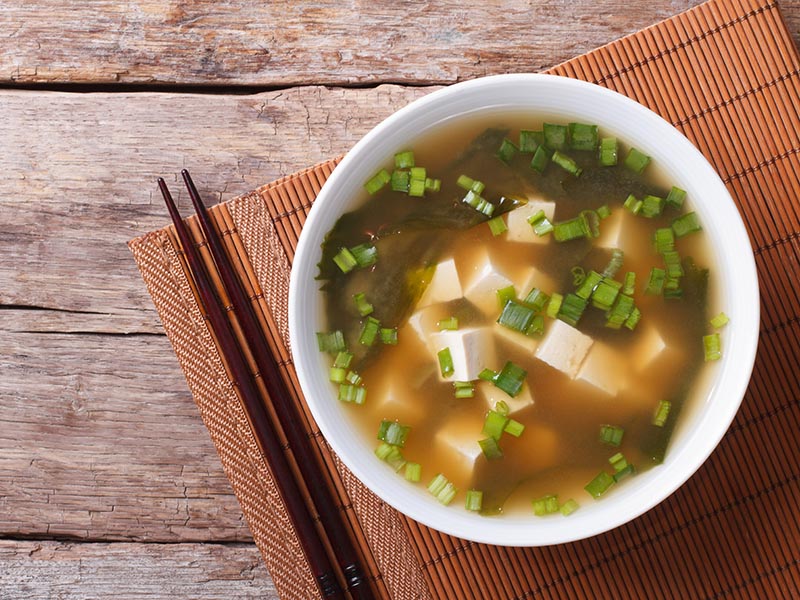
Due to the differences in regional cuisines, food from China and Japan has a distinct feel compared to one another. Generally speaking, the overall flavors of Chinese food impact your taste buds, while authentic Japanese delicacies tend to be more subdued.
First of all, the most significant advantage that China has is the vastness of the lands and the number of natural resources that China has at its disposal. Due to this, you can experience a variety of essences, including sweet, spicy, and sour.
China’s North, South, East, and West have different palates and styles. While the northern part prefers salty food, the southern part leans towards sweetness. The western side has more sour dishes than the eastern side with its spiciness.
As for Japan, the country prefers a more subtle type of flavor due to the use of lighter seasonings like salt, soy sauce, and a special bean paste called Miso. These components help Japanese food to have a more umami and a balanced taste.
There are also spicy dishes in Japan, but they are only available in mostly curry options. But even in that delicacy, the spiciness is too mild if you have a strong tolerance.
6. Table Manners
Many Asian cultures, in general, tend to put a lot of emphasis on table manners and rules. This tradition also stemmed from the introduction of Confucian beliefs. Despite being close, China and Japan have different meal traditions.
The table manners in a Chinese meal include chewing while your mouth is closed, lifting the rice bowl when you’re eating, and eating at your own pace.
On the other hand, the table manners in Japan are a little different. For example, when eating noodles in Japan, you have to make loud slurping sounds. Another thing is that you have to say “Itadakimasu” before you eat and “Gochisou–sama” after you finish your food.
Best Representatives For Chinese And Japanese Cuisine
After understanding both Chinese and Japanese food, you’re probably curious about how to recreate some dishes on your own. Well, you’re in luck because I’ve prepared some recipes for you to test your cooking skill.
Don’t Skip Without Trying These 2 Japanese Dishes
The following recipes represent Japanese cooking, which focuses on balancing flavors and ingredients. Although fried food exists there, it’s not quite as greasy and unhealthy as you think.
1. Fried Shrimp (Ebi Tempura)
Total time: 45 minutes.
When it comes to Japanese food, Tempura might be one of the most iconic. Generally speaking, Tempura is just a style of deep-frying. You can use any ingredients, from vegetables to fish, such as shrimp.
The elements from Ebi Tempura consist of two parts: shrimp (peeled and deveined) and a deep-frying batter (cornstarch, ice water, and baking powder). You only have to coat the shrimp evenly.
When the oil reaches the optimal temperature, dip the shrimp and fry until you see a golden layer starts forming. This outer skin will be the most delectable with its crunchy texture. Not just that, but the freshness of the shrimp will cut through, making the dish even better.
Shrimp Tempura is already simple if you know the recipe.
2. Udon Noodle Soup
Total time: 10 minutes.
Udon noodles are a constant staple of everyday Japanese meals. They’re pretty affordable, and the textures of each Udon strand are very chewy and delightful. That type of noodle has been a part of Japan for centuries, since either the Heian or Nara period.
In this recipe, you will be able to learn how to make a bowl of Udon noodle soup. For the stock, Japanese chefs often make Dashi broth by boiling Kombu kelp and bonito flakes.
The soup broth adds a lot of that beautiful umami into this dish. However, if you don’t have enough time to cook up a fresh batch of Dashi, you can always buy the instant powder version at various Asian supermarkets.
To assemble the Udon noodle soup, you place Dashi, Mirin (Japanese cooking wine), and soy sauce in a bowl before pouring hot water on top. The final thing is to add the cooked Udon as the finishing touch. And voila, you have a bowl of soup to warm you up.
2 Amazing Chinese Foods For Your Dinner Tonight
The quintessential aspects of Chinese foods are always about delivering the most explosive flavors to your mouth. In the end, Chinese food will leave a very positive impression on your mind.
1. Braised Pork Belly (Hong Shao Rou)
Total time: 1 hour 15 minutes.
In this entry, I want to show you a Shanghainese specialty, Hong Shao Rou (Braised Pork Belly). This dish is one of the more common family meals you will see in China, but it can also fit on a restaurant menu due to its fantastic flavors.
The pork belly is Hong Shao Rou’s primary focus since it tastes amazing. The savoriness will get even more profound if you buy the cuts with a bit more fat.
Besides the meat, Hong Shao Rou also uses a very interesting glaze consisting of sugar, Shaoxing wine (Chinese cooking wine), and soy sauce. This mixture is prevalent in a lot of braising dishes in China.
The primary cooking method is stewing, so the sauce will gradually seep into the meat and tenderize it. The sweet and salty mixture adds more depth to the savory pork.
2. Scallion Oil Noodles (Cong You Ban Mian)
Total time: 25 minutes.
This scallion oil noodle recipe is a great Chinese-style dish for those following a vegan-friendly diet. The formula is simple to make, and you can still experience the flavorful nature of Asian food.
The essential part of this particular delicacy is getting the scallion oil right. You will have to use a mixture of chopped scallions, soy sauce, and sugar. First, throw the white part of the scallions and then the green part into the frying pan.
When the scallions turn slightly brown, remove them before putting the soy sauce and sugar in the pan. The last two ingredients will give the dish a balanced set of sweet and savory.
The final step in making the dish is to mix the noodles with the scallions. The recipe calls for wheat noodles, but you can also use egg noodles. Just throw the noodles in the pan until everything is evenly coated.
Scallion oil noodles are quick to whip up even if you’re busy.
Why You Should Try Chinese And Japanese Food
The world is big, with so many locations to visit, people to meet, and, of course, food to eat. If you want to try out Asian food, I suggest starting with Chinese or Japanese cuisine. Why? You can look below.
1. Variety
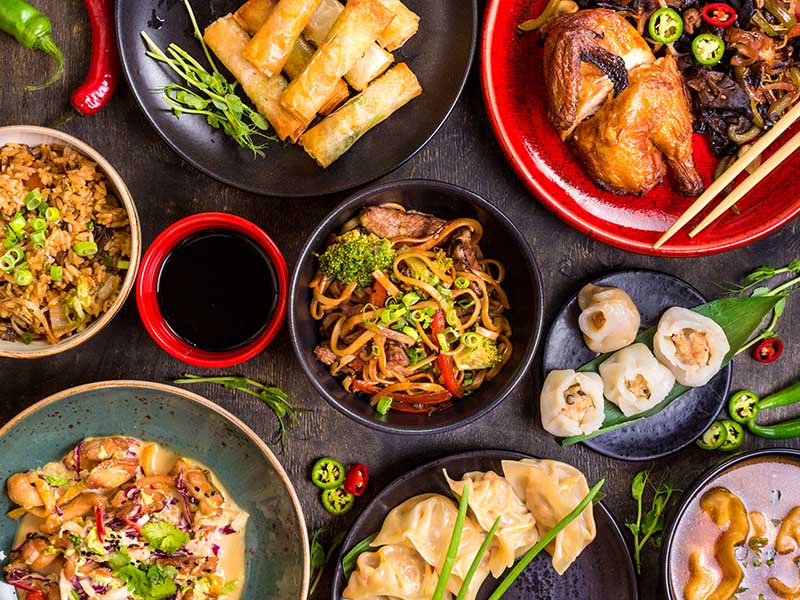
The first thing that might be able to convince you to try out these cuisines is the variety of food. In China, you will not have to eat the same menu every single day. Each regional Chinese cuisine will offer you a new set of dishes that might entice your appetite.
The diversity of Chinese food doesn’t just end there but also extends to the ingredients and the flavors. You can find spicy meat dishes in central China or a more mild-tasting seafood specialty in the country’s coastal region.
When it comes to Japan, the variety relies on most seafood since the country is an island. You can have both raw seafood and cooked seafood.
Not a fan of seafood? Japan also got you covered with beef stew, curry, and meat BBQ. The best thing about the cuisine is that they’re relatively low in calories, so you can eat Japanese food during your diet.
2. Flavors And Fragrances
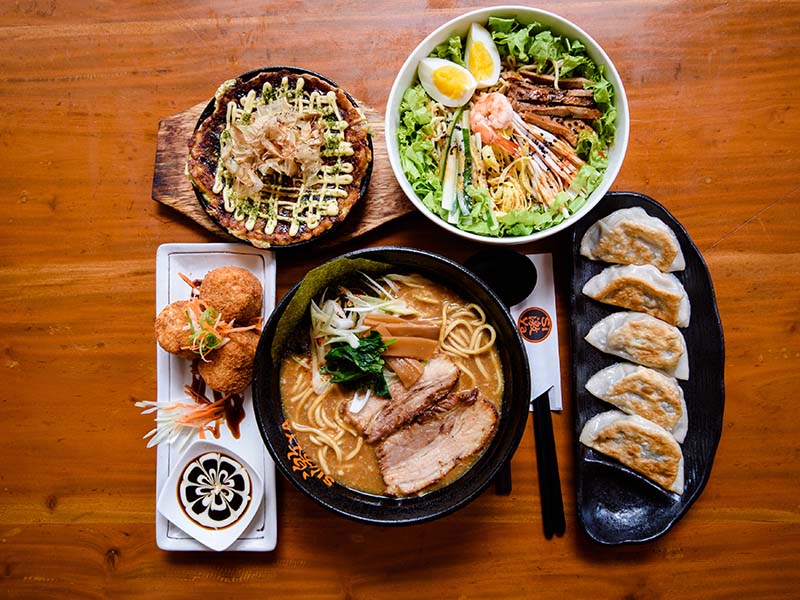
The next set of reasons you should try both Chinese and Japanese food comes from the experience, especially in the taste and smell departments. Every specialty from the region has a unique and authentic taste that you rarely find anywhere else.
As I have said above, China is home to many regional cuisines with their own distinct ingredients and tastes, like sweetness, sourness as well as spiciness. If you prefer a cuisine with a stronger impact, China is the way to go.
But for those people who prefer a bit more of a subtle flavor, then Japanese food is the way to go. The cuisine relies heavily on mild-tasting condiments like soy sauce and Miso paste to give a more umami essence.
Overall, if you like your food to have a multilayer of tastes and smells, these two Asian countries can satisfy your requirement, and maybe even more.
3. Good For Your Health
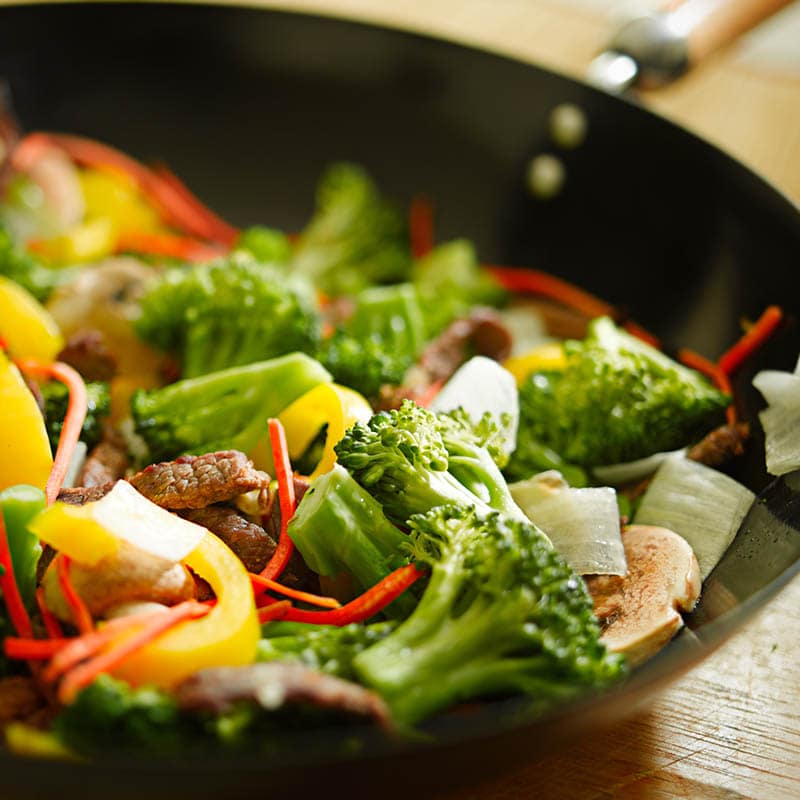
The final reason why you should think about trying either Chinese or Japanese food is really simple, the balanced nature of the delicacies.
Since Taoism and Confucianism heavily influence east Asian culture, harmony is emphasized in every aspect of life, including food. Most Chinese and Japanese dishes have an even amount of meat and vegetables.
The methods used in East Asian cooking are also much less harmful to your health in the long run. While deep-frying does exist in these countries, you will find that stewing, steaming, and stir-frying are more prevalent.
If you’re big on healthy living, Chinese and Japanese specialties will be suitable since they have the necessary carbs, proteins, and fiber.
One of the biggest reasons Japanese people are relatively healthier is their diet.
FAQs
There are several key points that people usually ask whenever they learn about a new cuisine. In this section, I want to take the opportunity to answer some of the more notable questions.
Gaining More Knowledge About East Asian Cuisine
From what you can see above, the core of East Asian food is all about maximizing the flavors without losing the essence of the ingredients. The difference between Chinese and Japanese food is apparent, but they contain a unique sense of harmony in the region.
As always, thanks for reading through this article. I hope you enjoy the information about the food. If you want to add your own input, give a comment below. And make sure to like and share the post on your social media. Enjoy a nice meal!
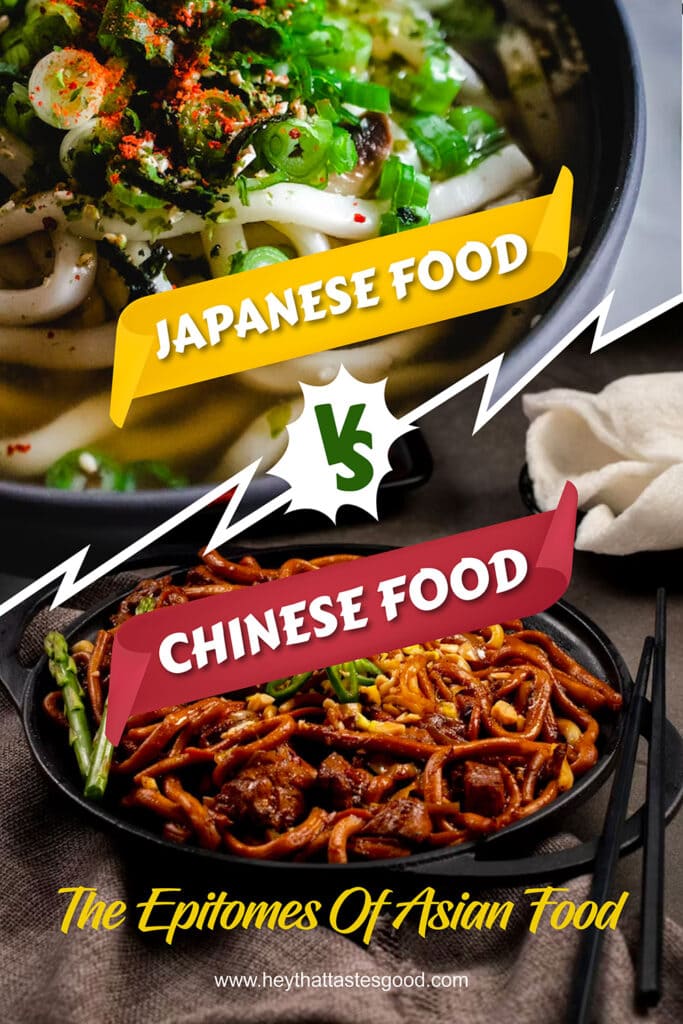
References
- En.wikipedia.org. 2022. Chinese Cuisine.
- En.wikipedia.org. 2021. Shandong Cuisine.
- En.wikipedia.org. 2022. Nagoya Cuisine.


Truc Tran (Kris)
Expertise
Home Cooking, Meal Planning, Recipe Development, Baking and Pastry, Food Editor, Cooking-video Maker, Asian Food Content Creator, Vietnamese Food Evaluation Expert
Education
Program: Diploma of Hospitality (Commercial Cookery)
Focus: The culinary program included a Certificate III in Commercial Cookery, a Certificate IV in Kitchen Management, and a Diploma of Hospitality Management. This education provided a comprehensive blend of theoretical and practical training in finance, sustainability, diversity, and human resources management.
Program: Culinary Arts at Kendall College (Australia Branch in Sydney)
Focus: Explored global cuisines, and developed entrepreneurial abilities to manage a successful food business, along with acquiring essential language, math, computer, and communication skills for success.
Program: Certificate of Vietnamese Cuisine Head Chef
Focus: Master traditional and modern Vietnamese cooking techniques.
Truc Tran, or Kris, is an accomplished food editor with extensive training in hospitality and culinary arts, including a deep focus on Vietnamese cuisine from various prestigious institutions. She possesses over nine years of experience, developing her expertise in global cuisines and blending traditional Vietnamese cooking with contemporary trends to create engaging and educational content.
She also has a rich educational background, including a Diploma of Hospitality from TasTAFE and a Bachelor of Arts in Culinary Arts from Kendall College’s Sydney branch. It enables her to offer unique insights into meal planning, recipe development, and food culture, making her articles and cooking videos both informative and appealing.